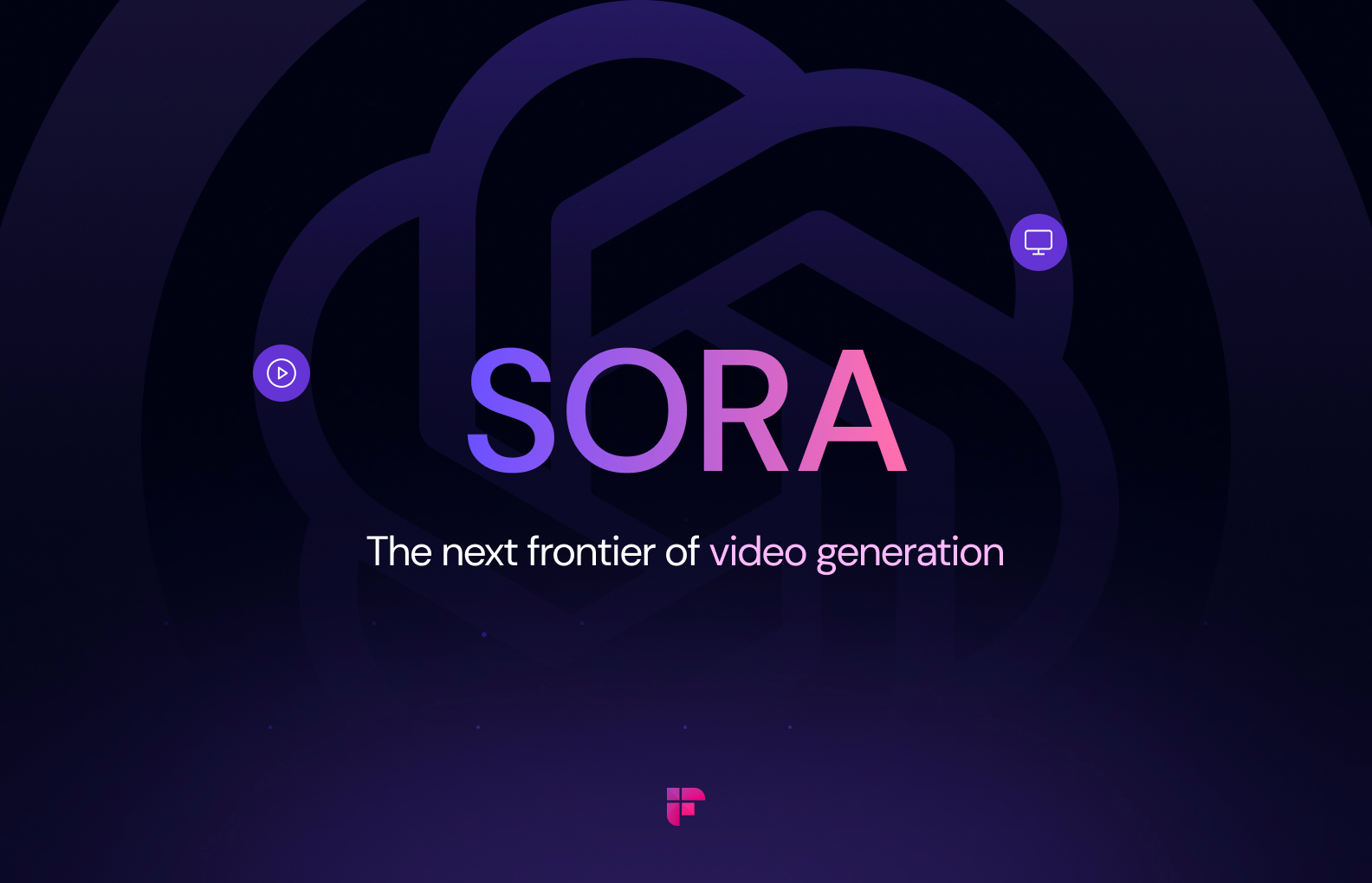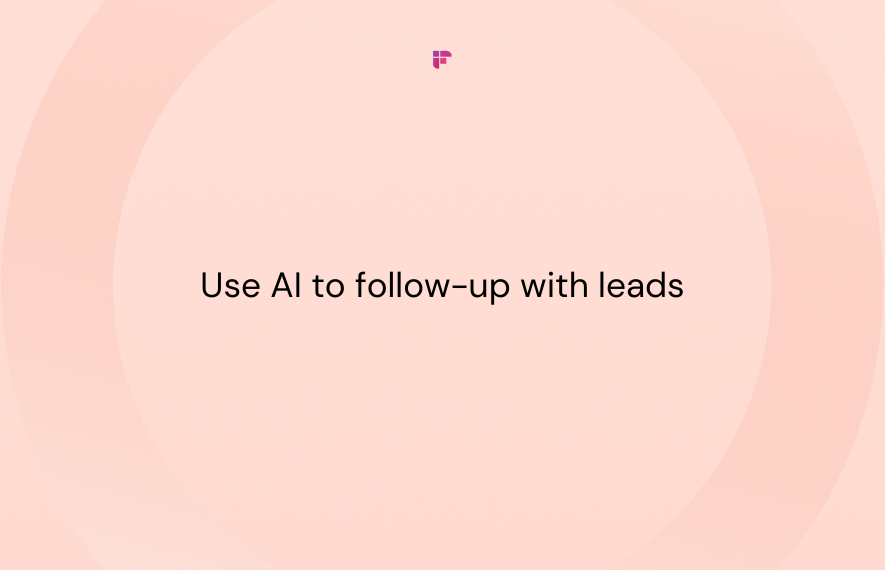Forget Hollywood budgets, professional cameras, and editing marathons. All you need is a laptop and your imagination.
Bring your ideas to life and create realistic videos with OpenAI’s latest generative AI model, Sora.
Want an astronaut playing piano on Mars? A time-traveling T-Rex exploring ancient Egypt? With Sora, you dictate the vision.
In this article, we’ll tell you:
- What is Sora
- How does it work
- What are its use cases, limitations, and risks
- How you can access Sora
Are you ready? Lights, camera, Sora—let's go!
Related: Top 10 AI Questions, Answered | Fireflies.ai
What is Sora?
Sora is OpenAI's latest text-to-video model. Think of Sora as DALL·E 3's video-generating cousin.
Sora creates highly detailed videos of up to 60 seconds in multiple aspect ratios and resolutions (up to 1920x1080). To create a video with Sora, describe what you want, wait a few moments, and that’s it!
Apart from generating videos from text instructions, Sora can animate still images and extend or fill in missing frames of existing videos with high accuracy.
Here’s a video generated by Sora—a skateboard-riding dog.
Text prompt: A skateboarding dog
What’s interesting is that Sora isn't limited to static shots. It can generate dynamic camera movements like panning, zooming, and following objects, adding depth to your videos. It can also handle multiple characters interacting and expressing emotions, making your videos more engaging.
Sora videos are currently silent. OpenAI hasn’t confirmed any plans to add audio capabilities yet. But, looking at their impressive strides in music generation with Jukebox, a neural network that creates music, it's not inconceivable that future models might bridge the gap between video and audio.
This is a natural progression, considering the vast amount of training data available. Nevertheless, it's unlikely to happen in the immediate future.
Also, OpenAI hasn’t revealed any technical details about Sora’s training data and parameters. We’ll have to wait for the numbers to be public. All we know is that Sora is trained on vast data of images and videos of different aspect ratios and resolutions.
Despite being in its development stage, Sora’s capabilities look very impressive.
Key features of Sora
- Realistic scenes: Sora renders intricately detailed scenes with accurate backgrounds, lighting, and multiple characters showing natural emotions and movements.
- Language mastery: It deeply comprehends text prompts, translating descriptive words into perfectly matched video visuals.
- Cinematic continuity: Sora maintains consistent characters, objects, and backdrops across different shots in a single video.
How can you access Sora?
Sora is not available for public use yet. OpenAI's CTO Mira Murati has confirmed that Sora will be available for public use later this year.
Currently, only a handful of people can access Sora, including the OpenAI testing team and a few visual artists, filmmakers, and designers.
How does Sora work?
Sora is a diffusion model. It is a foundation for models that can understand and simulate the real world, which is considered an important step toward achieving AGI.
Sora uses both a diffusion model and a transformer architecture. These two work together synergistically to generate videos from text prompts.
Let's break these down step-by-step:
1. Video building blocks
First, Sora breaks down videos into tiny square patches like Lego blocks. This patch approach lets Sora handle diverse video sizes, shapes, and orientations flexibly.
2. Text analysis
Next, the text prompt goes into Sora's transformer model to analyze the relationships between the words. Sora represents videos and images as patches, similar to tokens in GPT, allowing it to train on a diverse range of visual data with varying durations, resolutions, and aspect ratios.
3. Making connections
The transformer then searches Sora's video library and identifies patches that best match the text prompt's meaning. So words like "astronaut" and "Mars" retrieve fitting visual elements.
4. Assembling frames
Sora starts its diffusion process using the selected patches as a starting point. This gradually refines random video noise into coherent frames, tuned closer to the text prompt with each cycle.
5. Building sequence
The cleared-up frames are then combined together into a full video sequence. This final sequence becomes the video output we see.
Simply put, Sora uses the flexibility of patches and its transformer model to generate crisp, realistic videos tailored to your textual description!
The more data it trains on, the more Sora's understanding grows.
This is a basic overview of how Sora works. Read OpenAI's technical paper on video generation models for an in-depth understanding.
Use cases and applications of Sora
Sora has a wide range of potential use cases and applications across many industries:
1. Marketing and advertising
Sora has huge potential in marketing and advertising. Similar to how ChatGPT is being used for content creation, brands can leverage Sora to make custom promotional videos. Companies could use Sora to quickly generate targeted video content that helps them connect with and engage their audience.
Here's an example:
A couple of my favorite videos from those released by Open AI's sora. Prompt for this one:
— Riz Virk (@Rizstanford) February 15, 2024
Prompt: A stylish woman walks down a Tokyo street filled with warm glowing neon and animated city signage. She wears a black leather jacket, a long red dress, and black boots, and carries… pic.twitter.com/rvIJ5I7iBn
Prompt: A stylish woman walks down a Tokyo street filled with warm glowing neon and animated city signage. She wears a black leather jacket, a long red dress, and black boots, and carries a black purse. She wears sunglasses and red lipstick. She walks confidently and casually. The street is damp and reflective, creating a mirror effect of the colorful lights. Many pedestrians walk about.
2. Social Media
Sora is well-suited for generating short videos optimized for social media like TikTok, Instagram Reels, and YouTube Shorts. It shines when creating scenes that would be logistically challenging to film traditionally. For example, the fantastical scene below can be quickly produced with Sora for a social media post, even though shooting it may be expensive or even impossible.
OpenAI's Sora video generation is crazy!
— Puff Yachty (@PuffYachty) February 15, 2024
A single prompt produced this video 🤯
Prompt: Drone view of waves crashing against the rugged cliffs along Big Sur’s garay point beach. The crashing blue waters create white-tipped waves, while the golden light of the setting sun… pic.twitter.com/xn9kwxc9tA
Prompt: Drone view of waves crashing against the rugged cliffs along Big Sur’s garay point beach. The crashing blue waters create white-tipped waves, while the golden light of the setting sun illuminates the rocky shore. A small island with a lighthouse sits in the distance, and green shrubbery covers the cliff’s edge. The steep drop from the road down to the beach is a dramatic feat, with the cliff’s edges jutting out over the sea. This is a view that captures the raw beauty of the coast and the rugged landscape of the Pacific Coast Highway.
3. Filmmakers
AI video can be a powerful pre-production tool. Filmmakers can visualize entire scenes and storyboards before production begins, and designers can create video representations of products before physical construction.
Here’s an example:
Prompt: “A movie trailer featuring the adventures of the 30 year old space man wearing a red wool knitted motorcycle helmet, blue sky, salt desert, cinematic style, shot on 35mm film, vivid colors.”
— Brian Roemmele (@BrianRoemmele) February 15, 2024
pic.twitter.com/kReV6ByRjT
Prompt: A movie trailer featuring the adventures of the 30 year old space man wearing a red wool knitted motorcycle helmet, blue sky, salt desert, cinematic style, shot on 35mm film, vivid colors.
4. Educators
Educators can bring historical events and abstract concepts to life in the classroom through engaging AI-generated videos. For example, visualizing how extinct animals roamed the earth – just like in the video below:
👀 Sora looks interesting: several giant wooly mammoths approach treading through a snowy meadow, their long wooly fur lightly blows in the wind as they walk, snow covered trees and dramatic snow capped mountains in the distance, mid afternoon light with wispy clouds and a sun... pic.twitter.com/XNkARfP5FT
— Godfather 💎 SR/DHW (@DHWartist) February 16, 2024
Prompt: Several giant wooly mammoths approach treading through a snowy meadow, their long wooly fur lightly blows in the wind as they walk, snow covered trees and dramatic snow capped mountains in the distance, mid afternoon light with wispy clouds and a sun high in the distance creates a warm glow, the low camera view is stunning capturing the large furry mammal with beautiful photography, depth of field.
Limitations and risks of Sora
Sora's limitations span various aspects of video generation, from physical accuracy to the model's understanding of complex scenarios.
Here are some of them:
Challenges in physical accuracy and continuity
While Sora excels at generating visually stunning scenes, it can sometimes struggle with the intricacies of real-world physics and maintaining consistency throughout longer videos.
Here are two key limitations:
Unrealistic movements: Sora may struggle to accurately simulate the physics of certain interactions, leading to objects moving unnaturally or physical reactions not aligning with expectations. Imagine a video where a ball bounces strangely or someone walks unnaturally.
Inconsistent visuals: Maintaining continuity over longer video sequences can be challenging, with occasional inconsistencies in object positions or behaviors. For example, a coffee mug might appear in different locations within the same scene, or a character's clothing might change unexpectedly.
Sora's understanding of complex scenarios
While Sora can create visually captivating videos, it may not always fully grasp the complexities of real-world scenarios.
Here's how:
Limited grasp of cause and effect: Sora might struggle with scenarios requiring a deep understanding of sequential actions and their consequences. This could be evident in situations like a video depicting a chain reaction where the cause-and-effect relationship between events isn't entirely clear.
Spatial detail inaccuracies: Accurately modeling the spatial dynamics and relationships between objects within a scene can be challenging for Sora. This can manifest in scenes where objects appear incorrectly sized or positioned relative to each other, creating a sense of visual dissonance.
Safety concerns and unanswered questions
OpenAI is committed to responsible development and has outlined safety measures for Sora, including prohibiting harmful content. However, some concerns and uncertainties remain:
Release date uncertain: While OpenAI prioritizes safety measures, the release date of Sora is still unknown. It creates a sense of anticipation without concrete information about its availability.
Unclear reliability: The limited examples showcased by OpenAI might not represent the full range of output quality. It's unclear how consistently and reliably Sora can generate usable video content. Until the tool is widely available, this remains a question mark.
Data origin uncertainty: OpenAI has not publicly disclosed the sources of data used to train Sora, raising concerns about potential bias or ethical inconsistencies.
Deepfake and misinformation risks: The technology raises ethical questions surrounding the potential for creating deepfakes or misleading content, which could have significant societal and political ramifications. OpenAI has acknowledged the risk of misuse and is collaborating with experts to establish safeguards before public release. However, completely preventing malicious uses remains a challenge.
To combat the risks of misinformation and unethical use, OpenAI has announced a tool that will help detect videos generated by Sora.
Sora alternatives
While Sora is the most advanced text-to-video AI model available right now, there are some emerging alternatives with similar capabilities:
- Runway: A generative video platform with some text-to-video functionality.
- Lumiere: Google's video AI model in PyTorch can generate up to 5-second videos.
- Make-a-Video: Meta's text-to-video AI model.
Other startups like Synthesia, Kapwing, and Pictory offer generative video solutions, though they are less advanced than Sora.
Conclusion
With the addition of Sora, OpenAI now has a foot in three generative AI fields:
- ChatGPT for text
- DALL·E for image
- Sora for videos
Sora represents a giant leap forward in generative AI, unlocking astounding text-to-video capabilities. But its true impact lies in the hands of creators and society. How will it shape industries, fuel creativity, and impact our understanding of the world?
While improvements in areas like physical reasoning and content safety are still needed, Sora shows immense potential.
Remember, we've only scratched the surface of what will be possible as this technology continues advancing rapidly.
As of now, the future of AI-generated video looks very exciting but also a little scary.










